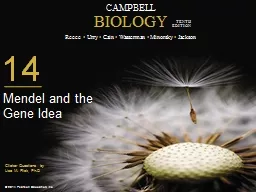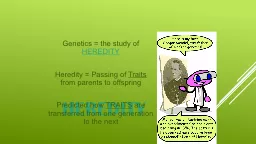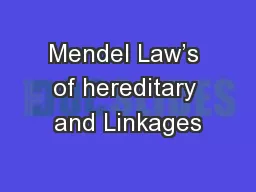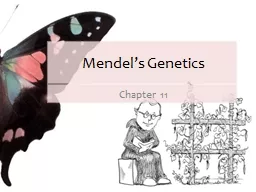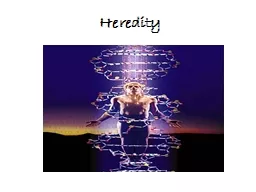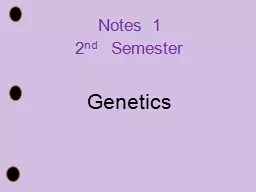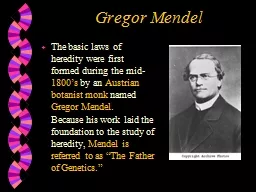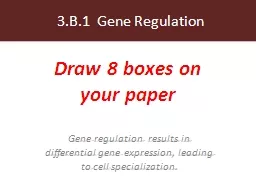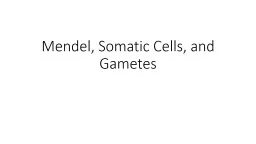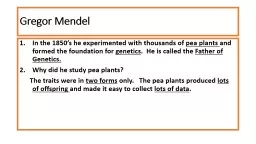PPT-Mendel and the Gene Idea
Author : karlyn-bohler | Published Date : 2017-10-08
Pea plants were particularly well suited for use in Mendel s breeding experiments for all of the following reasons except that peas show easily observed variations
Presentation Embed Code
Download Presentation
Download Presentation The PPT/PDF document "Mendel and the Gene Idea" is the property of its rightful owner. Permission is granted to download and print the materials on this website for personal, non-commercial use only, and to display it on your personal computer provided you do not modify the materials and that you retain all copyright notices contained in the materials. By downloading content from our website, you accept the terms of this agreement.
Mendel and the Gene Idea: Transcript
Download Rules Of Document
"Mendel and the Gene Idea"The content belongs to its owner. You may download and print it for personal use, without modification, and keep all copyright notices. By downloading, you agree to these terms.
Related Documents

